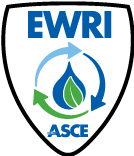
Calibration/Validation of Free-Surface Hydraulic Models
Purpose:
With computer advancements, numerical hydraulic models (1-, 2-, and 3-dimensional) have and continue to be used for a variety of water resources and engineering endeavors. To ensure the proper use of numerical models to any given free-surface hydraulic problem, the practitioner must first ensure that they have selected a numerical model that has mathematical consistency and convergence (Mathematical Code Verification) as well as correctly represents the physics of the class of flow problem in question in the prototype. Secondly, the practitioner must ensure the selected model is then calibrated and validated to the particular prototype flow problem through use of observed data or other means. Lastly, the practitioner should document and explain the uncertainty/accuracy of the model in representing the flow in the prototype. Although there are a number of publications that have discussed methodology for calibration/validation of free-surface hydraulic models used in civil engineering applications, no uniform standard guidelines exist. The proposed Task Committee will review the existing literature for best practices on calibration/validation of free-surface hydraulic models and develop a set of guidelines for best practices for calibration/validation of free-surface hydraulic models. This will strengthen technical quality of free-surface hydraulic model studies and benefit the public at large.
Membership
-
Robert Ray Holmes,
Jr, Ph.D., P.E., BC.WRE, F.EWRI, F.ASCE
Chair -
David M Weston,
P.E., BC.WRE, M.ASCE
Vice-Chair
-
Chad Ballard,
Member -
Fabian A Bombardelli,
Ph.D., F.EWRI, A.M.ASCE
Member
-
Alfred Jayakar Kalyanapu,
Ph.D., EIT, A.M.ASCE
Secretary
-
Tim D Straub,
Member
-
Kaveh Zamani,
Ph.D., HG, P.E., P.H., M.ASCE
Member

